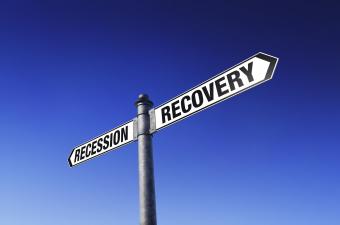In its latest monthly report released Monday, ""Capital Economics"":http://www.capitaleconomics.com/ painted a positive picture of the housing market, insisting the market ""has moved from bottoming-out to recovering.""
[IMAGE]To those wondering whether Capital Economics' positive prophesies are merely a mirage soon to be dispersed much like the short-lived positive movement the market experienced in 2009 and 2010, the analytics firm pointed out a substantial difference between what occurred in 2009-2010 and what is occurring today: Today's recovery is not the result of government stimulus or tax credits.
What occurred in 2009 and 2010 was a direct result of $19.2 billion in tax credits distributed to 2.7 million home buyers.
Still, Capital Economics admitted ""it may seem strange that we have been talking about a housing market recovery since towards the end of last year even though house prices have fallen over most of this period.""
In fact, the most recent ""S&P Case-Shiller Indices"":http://www.standardandpoors.com/servlet/BlobServer?blobheadername3=MDTType&blobcol=urldocumentfile&blobtable=SPComSecureDocument&blobheadervalue2=inline%3B+filename%3Ddownload.pdf&blobheadername2=ContentDisposition&blobheadervalue1=application%2Fpdf&blobkey=id&blobheadername1=contenttype&blobwhere=1245332471437&blobheadervalue3=abinary%3B+charset%3DUTF8&blobnocache=true revealed annual price declines for both the 10- and 20-city composites.
However, Capital Economics insisted in its report that ""because prices lag changes in housing market activity by as much as six months, they are not the most timely indicator of when the market has turned.""
If not house prices, what indicators suggest the market is in recovery mode? Economists at Capital Economics said in their report that home sales and housing starts are on the rise and visible inventory has declined to sustainable levels.
While a large proportion of today's home sales are going to investors and cash-buyers, Capital
[COLUMN_BREAK]Economics has detected a rise in average mortgage loan size among new loans, which suggests ""the appetite for mortgage credit is also beginning to improve.""
Furthermore, with homes continuing to be undervalued and the broader economy starting to pick up slightly, Capital Economics said the current recovery will continue without help from policymakers, though it does face a few threats.
First, with the national ""robo-signing settlement"":http://www.nationalmortgagesettlement.com/ now a few months behind us, it is possible that the backlog of foreclosures built up over the 18 months of settlement talks will flood the market ├â┬ó├óÔÇÜ┬¼├óÔé¼┼ô reversing the recent decline in inventory, putting downward pressure on prices, and negatively impacting new construction.
While this remains a possibility, ""so far at least, there have been few signs that banks are processing foreclosures at a quicker rate,"" Capital Economics stated.
Another threat, top of mind for many following the G8 Summit, is the impact of the euro-zone debt crisis.
However, Capital Economics suggested a limited euro-zone break-up would have a minimal impact on lending in the U.S., pointing out that U.S. banks' claims on Greece are only about 0.3 percent of Tier 1 capital ├â┬ó├óÔÇÜ┬¼├óÔé¼┼ô a major indicator of financial strength measured by a bank's regulator.
For now though, Greece remains part of the European Union following a unanimous statement from the participants in the G8 Summit stating that they intend to ensure Greece remains part of the union, according to a Monday article in the ""_Huffington Post._"":http://www.huffingtonpost.com/2012/05/20/g8-summit-2012-obama-growth-over-austerity_n_1531486.html
Regardless of its positive outlook, Capital Economics insisted the recovery will be slow and gradual with little to no improvement in prices through 2013 and only modest improvement to follow.
Abating anxious policymakers' tendency to attempt to ""fix"" the market, Capital Economics said in its Monday report, ""At this point, frustrating as it may seem, time is probably going to be the best healer.""
Capital Economics reminded policymakers that following the Great Depression, the government poured funds amounting to 8.5 percent of the nation's GDP into the Home Owners' Loan Corporation. In comparison, the government's Home Affordable Modification Program and the Home Affordable Refinance Program amount to about 0.5 percent of the current GDP.
Without intervening on a drastically larger scale, policymakers will have miniscule effect on recovery.

 theMReport.com Your trusted source for mortgage banking news
theMReport.com Your trusted source for mortgage banking news









